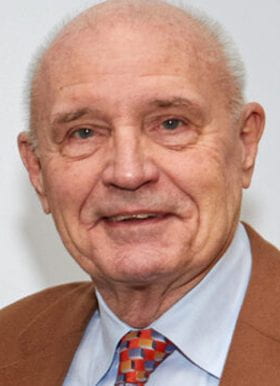
John Atkinson, MD
Samuel B. Grant Professor, WashU Medicine
- Phone: 314-362-8391
- Email: j.p.atkinson@nospam.wustl.edu
Further define the etiopathogenesis and clinical course of TREX-1 vasculopathy and develop a treatment/cure for this 100% penetrant autosomal dominant lethal disease with middle age onset
In addition to our long-term focus on the “workings” of the complement system, this laboratory has an interest in identifying and defining the genetic basis of novel human inflammatory diseases. Along this line of investigation, in 1987 in collaboration with retinal specialists and neuropathologists we characterized an autosomal dominant syndrome that we named cerebral retinal vasculopathy (CRV). This turned out to be a previously undescribed human disease. In 2008 we reported that its genetic basis was a frame-shift mutation in the carboxyl-terminus of an ancient single exon DNA repair enzyme known as TREX-1 (three prime exonuclease 1). It is the predominant DNase inside a cell, being anchored in the endoplasmic reticulum (ER) with its enzymatic site against DNA being in the cytosol. It has though the capacity to transfer to the nucleus. This disease was renamed retinal vasculopathy with cerebral leukoencephalopathy plus systemic features (RVCL-S). In other words, a micro-vasculopathy with the most prominent clinical manifestations being in the retina and white mater of the brain but also featuring a similar pathologic process in other organs including the liver and kidney. Of interest, we believe this disease also has relevance to our understanding of premature vascular aging, thus studying it has ramifications for a host of other diseases including dementias, strokes and visual loss.